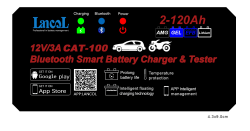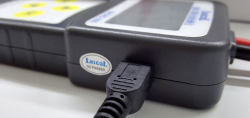What is the difference between start and traction (deep cycle)?
2019-11-25
Starter battery
Starter batteries are used for starting and driving vehicles. The principle is to provide as much starting current as possible over a very short time interval. The starter batteries therefore have a large number of thin lead plates to provide the greatest possible surface area for the acid to work against. The plates have been composed of a lead "sponge", similar to a foam sponge for the construction. This gives a very large surface area but if the battery is deeply discharged then this "mushroom" is consumed and falls to the bottom of the vessel. The starter batteries are destroyed after 30-150 deep discharges but can hold for thousands of cycles when used under normal starting conditions (2-5%) discharge.
Tractionary battery
Tractionary batteries have been designed for discharges down to 80% time and again and therefore have much thicker plates. The biggest difference between a truly traceable battery and others is that the plates are SOLIDA lead plates (not "mushroom" as on starter batteries) or of "tube cell type" ie. where the tubes in the positive plates enclose the active material that surrounds the lead conductors.
Lancol battery testers, professional vehicle diagnostic tools, adopt currently the world's most advanced conductance measurement technology to and accurately measure the actual capacity of the cold start amps of the vehicle's starter battery, healthy state of the battery itself.
Our finder tester will help you prevent vehicle breakdowns and maximize the performance of your battery by giving you valuable, easy to understand information about the state of your battery's health and charge.






